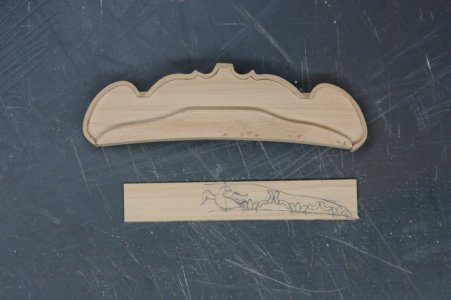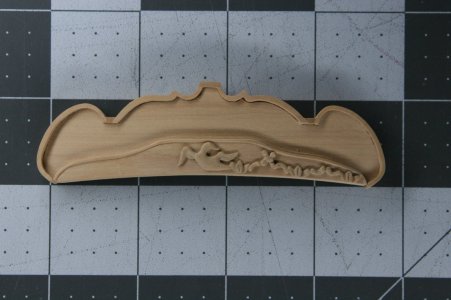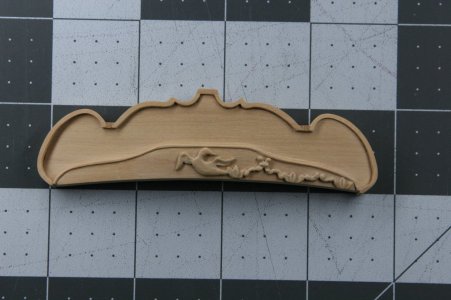Hello Friends (
sorry for the overly chatty post that follows),
About a week ago my attention turned to the structures of the stern. And during that single week I managed to snap off the end of the quarter rail, broke off one swivel gun, and also somehow lost two of the handles on the ship's wheel. How the swivel gun and ship's wheel handles were broken off I cannot say - but a clamp flipped off of what it was holding accounting for the destruction of the quarter rail.
Let's just say I need to be more careful.
On the stern of the ship the upper and lower counters, a few molding pieces, and the gallery lights (windows) had been roughed in previously. It was now time to add the upper structures (tafferel) along with the quarter pieces that flank the gallery. These last elements are festooned with carvings depicting mythological creatures and such.
My guiding resource (The Fully Framed Model - Antscherl and Herbert) largely depicts the Pegasus. As a result, there are certain
Pegasusy features to my model. But to continue to refer to my ship as the Kingfisher it seemed that I would now need to embrace the unique features of THAT swan class ship - particularly here at the stern where she deviates significantly from what is shown in TFFM.
I do have copies of the Kingfisher NMM plans - but to say they are difficult for me to interpret is an understatement. To that end I will exercise a certain amount of creative license.
Mea culpa.
The stern of the ship is curved port to starboard so the tafferel obviously needs to reflect that shape. I had hoped this would be a time when I could use the kit-supplied parts but for some reason the tafferel components were offered flat. I did try to bend the kit parts but failed.
My solution was to make up my own tafferel using a curved form and thin layers of boxwood:
View attachment 505389
View attachment 505390
View attachment 505391
The NMM drawings clearly show a capping rail covering the top and sides of the tafferel - but it is no small request to fabricate this molding on such an ornate element. Making matters worse, the capping rail also needed to reflect the curvature of the tafferel left to right.
I used some overly wide left-over boxwood from the kit and carefully pieced together the rail:
View attachment 505392
Temporarily in place so that I could place the rail parallel to the keel (and moments before the quarter rail was broken...):
View attachment 505393
And now with the capping rail cleaned up:
View attachment 505394
On the inboard side:
View attachment 505395
And from above:
View attachment 505396
And now just sitting loosely in place for a photo:
View attachment 505397
View attachment 505398
View attachment 505399
I can see from these photos that I need to increase the camber of the lower edge of the tafferel.
To be continued...



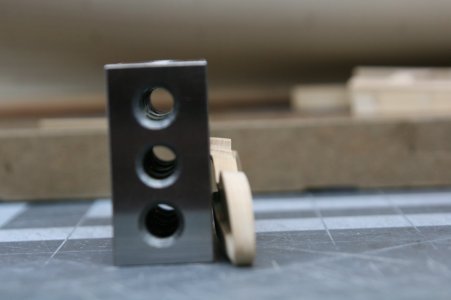
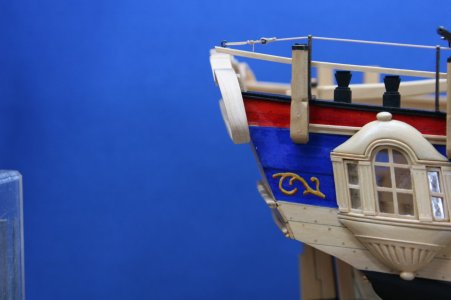


 .Cheers Grant
.Cheers Grant